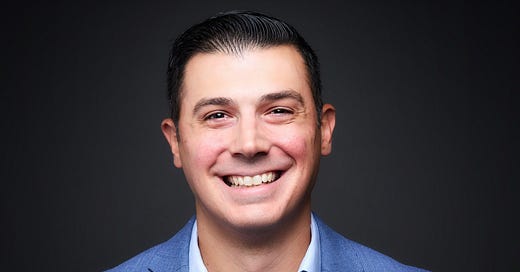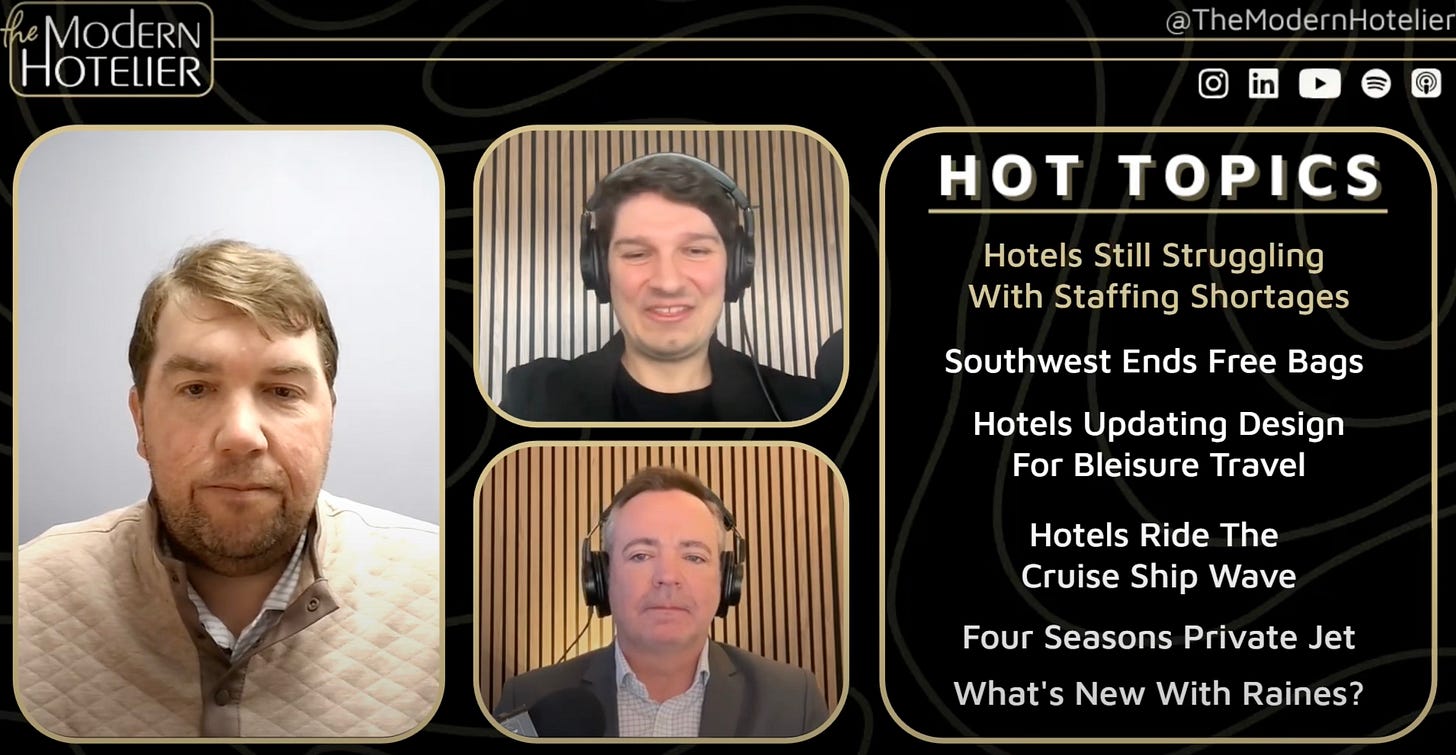💡 DIY Media Lists: Reaching the Right Journalists
How to build and maintain press contacts without expensive subscriptions
Media lists are essential tools for anyone looking to get coverage for their company, but how do you build one without spending thousands on database subscriptions?
This question came up during a follow-up conversation after CJ Media's quarterly media training session with the Women in Hospitality Leadership Alliance. Someone wanted to know how to find the right media contacts for specific topics and build relationships with them.
It's a common challenge when you're trying to share news about your latest innovations, highlight special offerings, or position your leadership team as industry experts. Knowing exactly who to contact can make all the difference between getting noticed or getting ignored.
If you aren't working with a PR agency, you'll need to create your own media list. While professional database subscriptions can cost thousands of dollars, building a targeted industry-specific list is actually quite manageable with some focused effort.
Creating Your Industry Media List
Start by setting up a simple but effective tracking system. An Excel spreadsheet works perfectly for tracking your media contacts. Include these essential columns:
Media outlet name
Journalist/content creator name
Title
Email address
Media type (traditional publication, food blog, travel podcast, etc.)
Beat/topics they typically cover (dining, luxury travel, business hospitality, etc.)
Phone number (if available)
LinkedIn profile
Notes about past interactions
Finding the Right Media Contacts
Begin with the publications you already trust. What industry outlets do you regularly read for trends? Which blogs or podcasts deliver valuable content relevant to your business? These sources are your starting point:
Analyze your current media consumption. Publications like Hotel Business, Lodging Magazine, or Hotel Management cover topics relevant to your industry. Identify the journalists who write about your specific segment or areas of expertise and add them to your list.
Review article bylines. When reading about new concepts or innovations in your field, note the writers' names and look up their contact information. Many publication websites list staff information or provide general editorial contact details.
Expand beyond traditional outlets. Today's media landscape includes influential bloggers, podcasts, and social media content creators. When you see competitors featured on platforms you're not familiar with, add them to your list for potential outreach.
Leverage industry events. Attending conferences or trade shows? Ask organizers if they have a list of attending media. This provides immediate contacts and opportunities for in-person connections that can lead to valuable coverage.
Maintaining Your Media List
Unlike expensive database software that updates automatically, your custom list requires regular maintenance:
Set a monthly reminder to review your contacts
Check for journalists who have changed publications
Update contact information for current media relationships
Add new industry-focused outlets and content creators
Pay attention to communication signals when sending press releases about your latest renovations or personnel changes — bounced emails indicate a contact may have moved on, and auto-replies often provide updated information. Following key journalists on LinkedIn also helps you stay informed about their career moves.
Building Meaningful Media Relationships
Remember that a media list is just the foundation of your PR efforts. The real value comes from building genuine relationships with these contacts. Follow their coverage, engage thoughtfully on social media, and send personalized pitches that demonstrate you understand their audience and content needs.
Don't always send the same generic email to everyone on your list. When possible, tailor your approach based on what each journalist typically covers. Someone who covers design might be interested in your recent renovation details, while a business reporter might care more about occupancy trends and expansion plans. That said, sometimes a broader announcement to your entire list makes sense for major news — just be strategic about when you use this approach.
A well-maintained media list requires some effort, but it's an investment that pays dividends in more targeted, successful outreach. The time you spend creating and updating your list will be repaid through more effective communication and stronger media relationships that ultimately help share your company's story with the right audiences.
Before You Hit Record
Wing it? No, thank you.
Anyone who says "I'll just wing it" secretly plans to fail. They don't prepare because they want an excuse if something goes wrong.
Everyone, and I do mean EV. ERY. ONE., overestimates their ability to wing it.
That's why we put so much effort into the pre-recording preparation for Top Floor. We require guests to do a 30-minute prep call with me before we schedule a recording, and we do four things in that call:
I tell a short version of my life story, from opening hotels for Starwood to founding Hive Marketing.
I explain the structure of an episode and our elevator analogy, including the Emergency Call Button and the Loading Dock.
I ask the guest to tell a more extended version of their life story.
Along the way, we bounce ideas off each other about what questions we want to cover in the recording.
After we prep, I use the transcription of that call to help me create questions for the episode, which I share in advance so the guest doesn't have to wing it. (In news that will surprise no one: people still wing it.)
The prep call benefits the guest, the audience, and me by:
Building rapport. We connect as humans and lay the groundwork for an authentic conversation during the recording.
Setting expectations. We discuss the structure of the episode and any off-limit topics or areas of emphasis so no one is caught off guard. Doing this eases nerves and improves performance, especially for someone new to podcasting.
Troubleshooting tech. Connecting in advance allows us to identify potential issues with equipment, internet connection, or sound quality. Catching these problems early avoids scrambling on recording day.
Reducing rambling. The quality of the content is better when we've discussed it in advance, and the guest is less likely to ramble or veer off-topic, resulting in a tighter, more focused episode. It’s easier to edit, too.
A prep call is a small time investment that creates confidence, clarity, and a more compelling conversation — meaning the listener won't get bored or annoyed.
Susan Barry is the host of Top Floor, a podcast about the future of hospitality. She is the founder and Queen Bee of Hive Marketing, providing B2B marketing and communications consulting for the hospitality industry for 16 years; a partner in Cayuga Hospitality Consultants; and a Steering Committee member of Female Founders in Hospitality. She lives in Atlanta with her artist husband, Sean.
From Achievement to Aspiration: Why Dreamers Never Stop Dreaming
“Fulfilling a dream gives you the power to see further and deeper — further out in the world toward what is possible, and deeper into yourself to what you are capable of. It’s why there are so few stories about people who have done something big then just packed their bags and moved to a private island never to be heard from again. People who think big and succeed almost always continue to push and to strive and to dream bigger.”
— Arnold Schwarzenegger, “Be Useful: Seven Tools for Life”
Grey Raines Shares Hospitality Insights on The Modern Hotelier
Grey Raines, managing partner at Raines, recently joined The Modern Hotelier podcast to discuss March's hottest hospitality trends. Fresh from the Hunter Hotel Investment Conference, Grey offered valuable insights on the industry's pressing challenges, including the ongoing labor shortage and evolving hotel design concepts. The conversation explored how hotels are adapting to the growing bleisure market with reimagined lobby spaces, the shift in airline strategies with Spirit's premium pivot and Southwest's baggage policy changes, and innovative partnerships between hotels and cruise lines. Grey also shared updates on his company's latest developments, including their new hotel opening in Greenville, NC, providing listeners with expert perspective on the future of travel and hospitality.
Watch the full conversation here.
Mark Your Calendar: Upcoming Industry Events
AAHOACON 2025 in New Orleans (April 15-17)
ILC’s New York Cultivate in NYC (April 24-25)
BITAC Operations 2025 in Newport Beach, CA (April 27-29)
Hotec Operations 2025 in Orlando, FL (May 19-21)
NYU International Hospitality Investment Forum 2025 (June 1-3)
First time reading CJ’s Weekly Check-In? Don’t miss out — subscribe today!
CJ’s Weekly Check-In is unlike any other newsletter in the hospitality industry. It empowers hospitality leaders with impactful communication strategies, tips, tactics, and insight to help them cut through the noise and capture attention in the space.
Alongside thoughtful contributions from CJ Media Solutions, LLC's team about media relations, executive thought leadership, crisis communications, public speaking, and more, the newsletter features brief commentary from some of CJ Media's partners, including industry journalists, analysts, association leaders, podcast hosts, and more
Subscribe now for the latest insights and communication strategies to set you apart.







